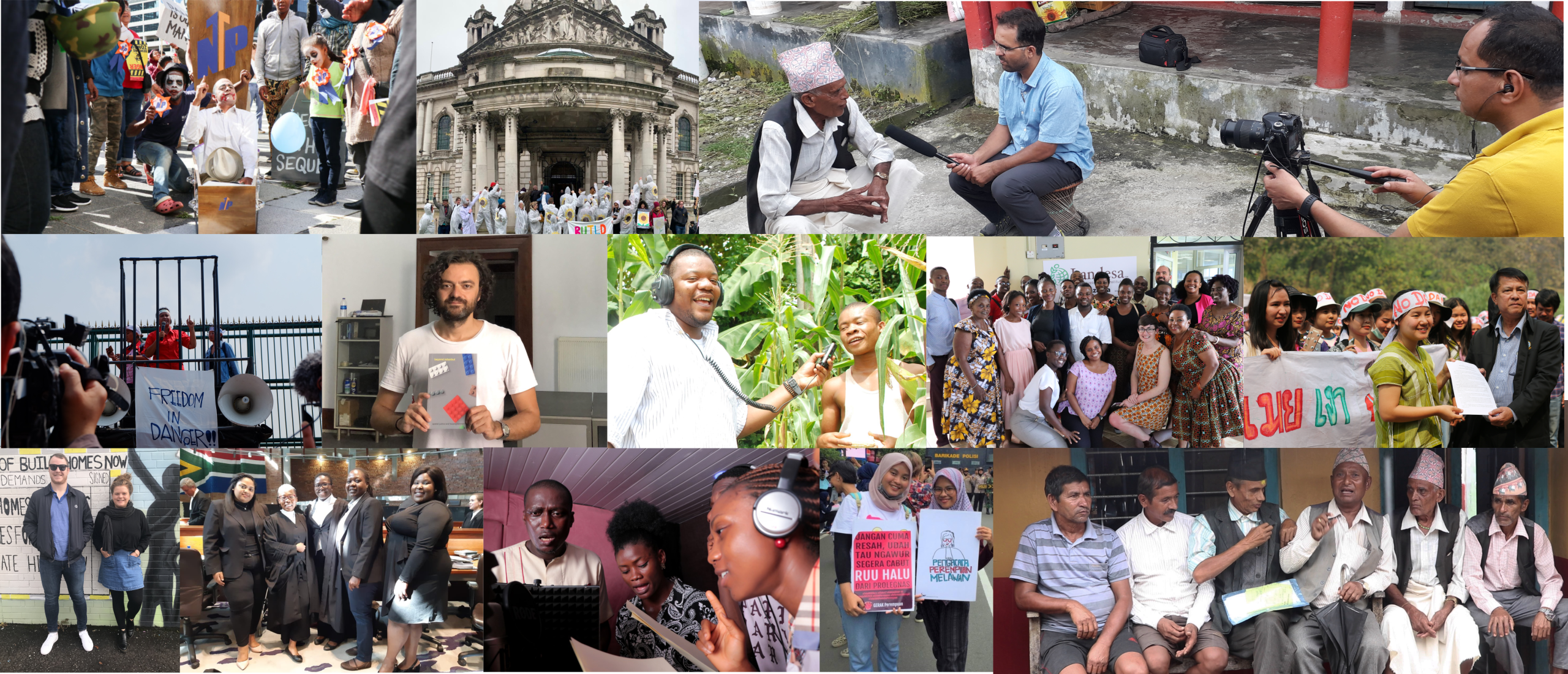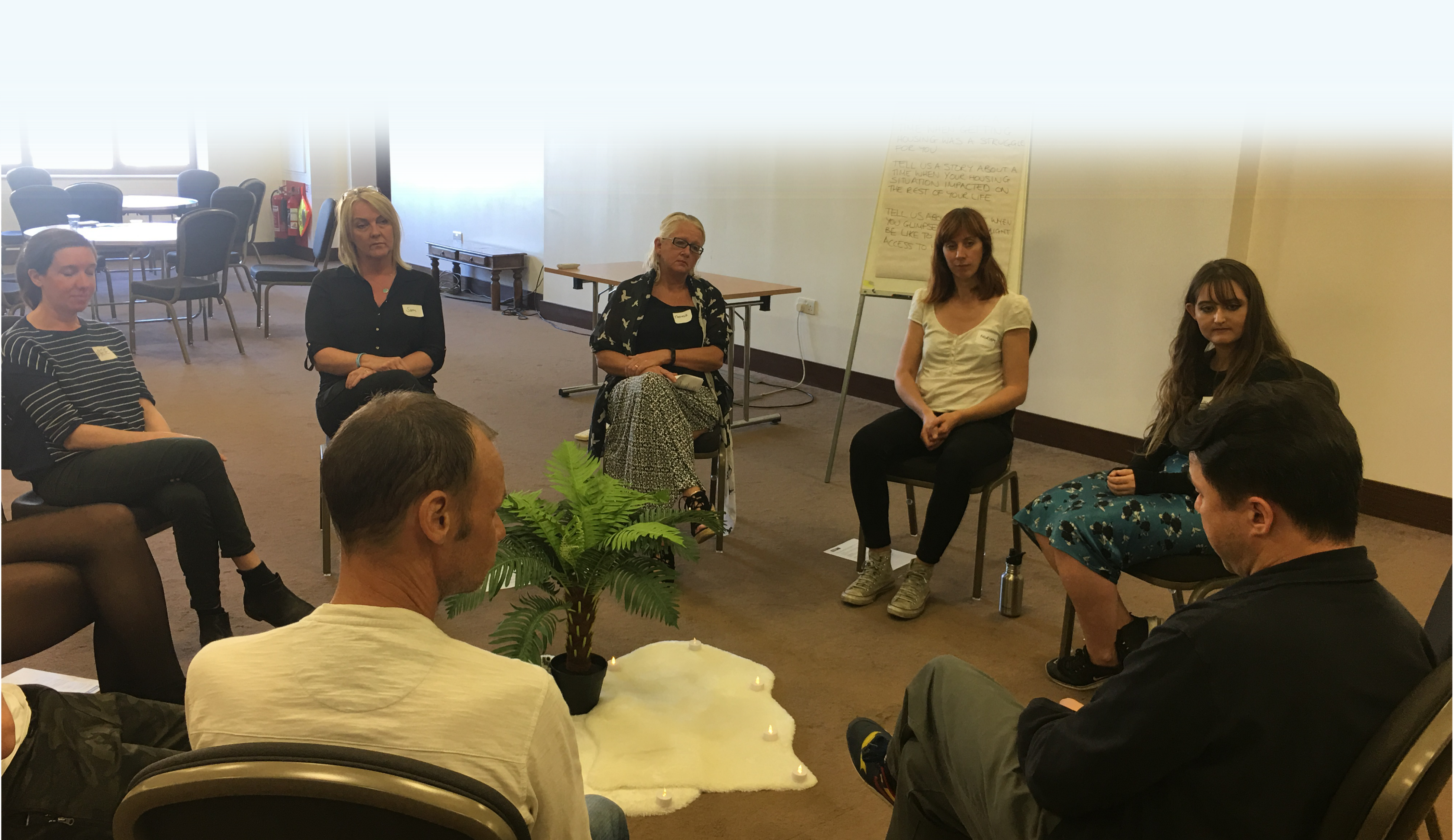Maeve McClenaghan
United Kingdom

Investigative journalist Maeve McClenaghan’s Bertha Challenge Project piloted the extensive use of Story Circles – a tool for a participatory model of journalism that goes beyond data to report with people, not on them, to share experiences of homelessness.
Maeve McClenaghan, a journalist with The Bureau of Investigative Journalism (TBIJ) in the UK, used part of her Bertha Challenge Project Fund to develop Story Circles, an experimental methodology developed to report with people, not on them. Having previously reported on the extent of people sleeping rough in the UK, Maeve used her Fellowship to dig deeper into the structural causes of homelessness while trying new ways to collect and share stories that go beyond data investigations and mere reports to make people active agents in the storytelling.
She started her Fellowship work by asking for information from local journalists and citizens on housing waiting lists from numerous municipal areas. She also visited cities, neighborhoods and housing estates where the need for affordable housing is most acute, and invited residents to share their stories of homelessness. Story Circle sessions began with a meal and a conversation. Participants then spent five minutes each talking about themselves. The format attracted participation from people who were homeless or had experienced homelessness, and provided Maeve with insight into the issues important to them in a way that wouldn’t have been possible by pursuing individual case studies.
A principle of the Story Circle methodology is to ensure an ongoing and iterative exchange between journalists and the people in their stories. Following the investigation, Maeve organized events in cities where Story Circles had been held, inviting participants, local journalists and housing service providers to attend. Attendees heard first-hand experiences of Story Circle participants and had an opportunity to discuss the investigation and its local implications. One speaker told TBIJ how strange it felt to have lots of people from different professions engaging with him at the event, after so many years of feeling that his views weren’t valid.
“The Challenge allowed us at TBIJ to really think creatively about listening and hearing how homeless people want us to tell their stories and raise issues of homelessness rather than the more conventional way of conducting journalism, which is to report on issues and writing about people.”
Maeve McClenaghan, TBIJ

Maeve was motivated to use Story Circles when she realized the vast disconnect between homelessness reporting in mainstream media and the widespread experiences of renters receiving housing benefits. As a result of reduced access to council-owned social housing stock, local councils have increasingly encouraged those in danger of homelessness to rent through the private sector. The Local Housing Allowance is meant to provide recipients with the rental cost for the cheapest 30% of homes on the market, but there’s a critical disparity between the allowance and the reality of the market. Maeve and her team discovered that, of more than 62,000 two-bedroom properties available in the UK, only 6% would be affordable to someone on housing benefits.
Maeve contacted private landlords who had listed affordable properties and found that just 10% of those landlords would consider renting to someone on housing benefit. Some required impractical conditions, such as six months’ rent up front. Traditional reporting did not reflect these commonplace experiences, but Story Circles allowed these narratives to emerge.
“People may not trust 'the media' as a monolithic entity, but providing real hospitality, time, respect, a platform and a commitment to return allowed trust to blossom.”
TBIJ on using Story Circles
At the heart of Maeve’s Fellowship work was a call made to 30 local media outlets to work with TBIJ to gather information from local councils on housing needs. As a much bigger network of journalists, they could make the stories locally relevant while offering the traction of a nationwide investigation. TBIJ shared the data and methodology for journalists to report on the specific statistics for their area and to solicit responses from their local councils.
Maeve’s investigation was published in 32 regional and national reports. It’s subsequently been used by national charities advocating for housing access, as evidence in court cases and to inform a submission to a government inquiry on housing. The Story Circle methodology has been shared on several British journalism websites. The hope is that it becomes a journalism standard and begins to support generative and non-extractive storytelling, providing an advocacy platform for journalism subjects.

CREDITS
Photo 1: Story Circle participants in Bedford talking about experiences of homelessness. Image: TBIJ
Photo 2: Story Circle participants talking about experiences of homelessness. Image: TBIJ
Authors: The Bertha Challenge Team
Editorial Consultant: Karen Frances Eng
This story was originally published in the Bertha Fellows book and some of the information in this story may have changed since it was first published.


 Built with Shorthand
Built with Shorthand